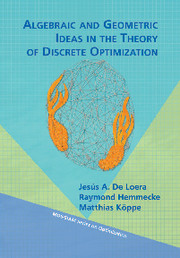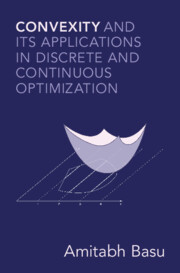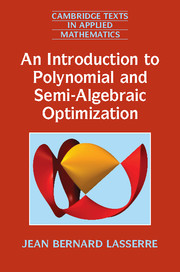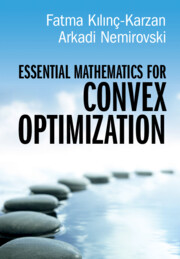Algebraic and Geometric Ideas in the Theory of Discrete Optimization
In recent years, many new techniques have emerged in the mathematical theory of discrete optimization that have proven to be effective in solving a number of hard problems. This book presents these recent advances, particularly those that arise from algebraic geometry, commutative algebra, convex and discrete geometry, generating functions, and other tools normally considered outside of the standard curriculum in optimization. These new techniques, all of which are presented with minimal prerequisites, provide a transition from linear to nonlinear discrete optimization. This book can be used as a textbook for advanced undergraduates or first-year graduate students in mathematics, computer science or operations research. It is also appropriate for mathematicians, engineers, and scientists engaged in computation who wish to gain a deeper understanding of how and why algorithms work.
- Presents recent techniques that are not well known among practitioners of discrete optimization
- The prerequisites that are necessary to understand the material are kept to a minimum
- The book provides a transition from linear discrete optimization to nonlinear discrete optimization
Product details
February 2013Paperback
9781611972436
333 pages
254 × 178 × 16 mm
0.63kg
This item is not supplied by Cambridge University Press in your region. Please contact Soc for Industrial & Applied Mathematics for availability.
Table of Contents
- List of figures
- List of tables
- List of algorithms
- Preface
- Part I. Established Tools of Discrete Optimization:
- 1. Tools from linear and convex optimization
- 2. Tools from the geometry of numbers and integer optimization
- Part II. Graver Basis Methods:
- 3. Graver bases
- 4. Graver bases for block-structured integer programs
- Part III. Generating Function Methods:
- 5. Introduction to generating functions
- 6. Decompositions of indicator functions of polyhedral
- 7. Barvinok's short rational generating functions
- 8. Global mixed-integer polynomial optimization via the summation method
- 9. Multicriteria integer linear optimization via Barvinok–Woods integer projection
- Part IV. Gröbner Basis Methods:
- 10. Computations with polynomials
- 11. Gröbner bases in integer programming
- Part V. Nullstellensatz and Positivstellensatz Relaxations:
- 12. The Nullstellensatz in discrete optimization
- 13. Positivity of polynomials and global optimization
- 14. Epilogue
- Bibliography
- Index.






